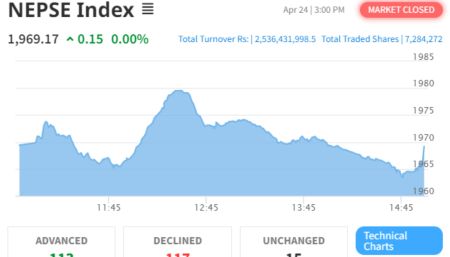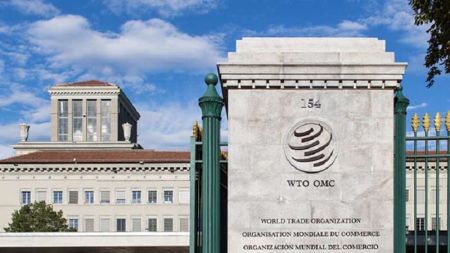March 16: Despite the policy of Nepal Rastra Bank (NRB) to increase investment in the productive sector, most of the banks and financial institutions have provided loans for imports and consumption.
Banks have aggressively released credit to unproductive sectors, saying there is no demand for credit in the productive sector. According to the NRB, banks have provided loans for imports and consumption by reducing the credit flow to the construction sector.
Banks and financial institutions have increased their credit flow by a total of Rs 507.1 billion in the first seven months of the current fiscal year. However, more loans have flown to the unproductive sector. Banks have increased consumer credit by reducing construction sector credit.
Credit flow to the consumer sector has increased by Rs 676.40 billion in the review period. NRB informed that the credit to the construction sector has decreased by around Rs 200 billion during this period.
Banks argue that the demand for credit in the production and infrastructure development sector has decreased, and the credit flow in the consumer sector has increased due to the COVID-19 pandemic.
Chairman of the Nepal Bankers' Association and Chief Executive Officer of Agriculture Development Bank, Anil Kumar Upadhyaya, says that the growth of consumer loans has been high due to the decline in demand for loans for industry and business.
"Banks and financial institutions have to lend in areas where the demand is high," he said, adding that the growth rate of consumer loans has been high due to declining demand for credit in the productive sector due to Covid-19.
Banks and financial institutions have been giving consumer loans by accepting gold and silver, term receipts, and bonds as collateral. Similarly, they have been investing in credit cards as well. The highest term receipt collateral loan has increased by 102 percent.
Wholesale and retail business comes second in terms of credit flow from banks at present.
In the first seven months of the current fiscal year, banks have invested Rs 115.79 billion in this sector. However, during this period, credit expansion of banks in manufacturing industries, agriculture, and service sector has been less than Rs 100 billion.
Deepening liquidity crisis
The lack of liquidity in banks and financial institutions is increasing, as banks are aggressive in increasing investment in unproductive sectors.
Banker Upendra Poudyal says that the liquidity crisis is increasing due to excessive credit flow of banks for imports and consumption.
"If the loans had been invested in productive sectors, new deposits would have been created," he said, adding. “Loans invested in imports and consumption have flowed out of the country and therefore there is liquidity crisis. Although BFIs are profit-oriented companies, they should act responsibly during the current crisis.”
Bank's investment since mid-March has almost come to a standstill due to the lack of liquidity. Banks are borrowing from NRB to maintain the cash reserve ratio (CRR).






















